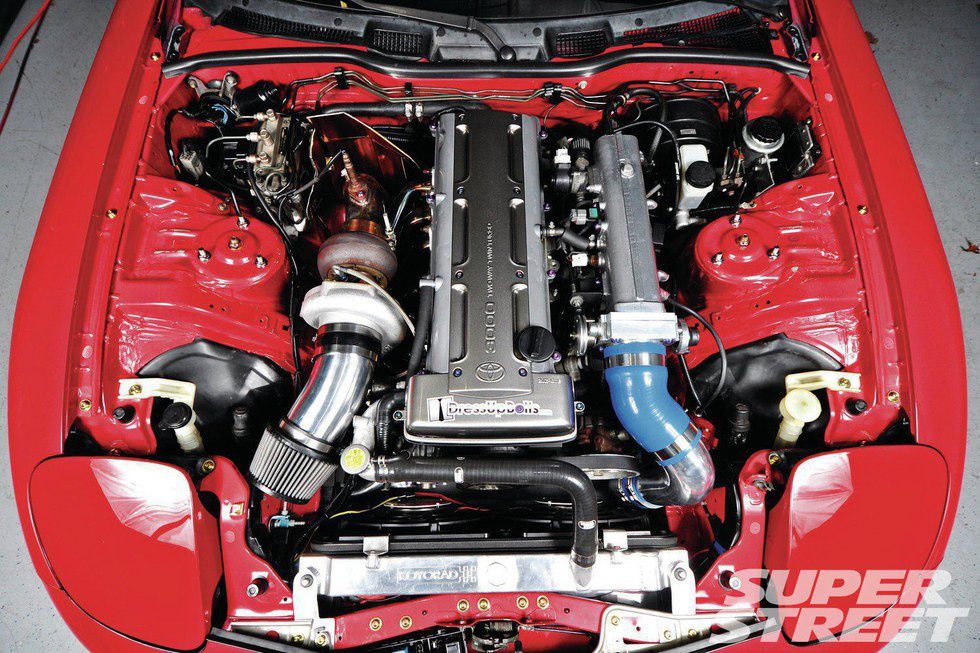In the matter of staying naturally aspirated vs. moving to forced induction, there's a lot to keep in mind. For the sake of this article, I will keep it simplified to a naturally aspirated V8 vs. a turbocharged straight-6. To put perspective into what that means for engines, the best comparison would probably be Chevy's LS series V8s against Toyota's 2JZ-GTE, which is a twin-turbo straight-6 engine, and a personal favorite of mine. Before we get into comparisons, you should understand what it means for an engine to be naturally aspirated or when in engine is forced induction.
Background info:
Naturally aspirated (N/A): Naturally aspirated means that the engine gets its air intake from a regular intake system, meaning it breathes on its own, not needing external power to feed air into it. Americanmuscle.com, in their article of "Naturally Aspirated vs. Forced Induction Part 1: Naturally Aspirated Fox Body Motors," describes an engine as one large air pump, where the more air goes in, the more fuel can get mixed with it. And when giving that air/fuel mixture a spark, it combusts and the engine turns. This is the regular way an engine works.
Forced Induction (F/I): Forced Induction means that the engine gets its air intake from a supercharger, or in this case a turbocharger, which forces a lot more air into the engine. This leads to quicker combustion cycles which leads to quicker time to reach peak horsepower and torque.
Reasons to choose N/A:
Balanced Power Curves: An N/A motor will have linear horsepower and torque curves, which means smooth power delivery. This means that power delivery will be predictable for the driver to anticipate.
Reasons Not to choose N/A:
Fuel Consumption: Being a bigger engine, it takes more fuel to run it. That means more stops at the gas station and more craters in your bank account.
Reasons to choose F/I:
Crazy Fast Power: Being able to force air in, making faster combustion cycles, the power delivery is much faster than a naturally aspirated car when on boost. As soon as the compressor turbine is up to boost, the engine jumps in rpms. Not only does that mean more horsepower, but turbos add a lot more torque.
Turbo Flutter/BOV Noise: The noise that comes from a turbo after releasing the throttle is so intoxicating, as you can see below.
Fuel Efficiency: Compared to a big V8, a turbo V6 is going to drink less fuel because of the fact that it's a smaller engine.
Reasons not to choose F/I:
Turbo Lag: When full throttle at low rpm, an F/I motor will take a bit longer to deliver full power because it needs air to turn the turbo. Before the turbo spools up and makes boost, it is slower than an N/A motor, being restricted of air.
More Plumbing/Maintenance: Driving with a turbo, especially if you like to drive hard often, you have to make sure to keep your engine cool and prepared for the quick power. Turbos will blow your engine if not properly prepared.
Quick Power Delivery: Though this is also listed as an advantage, the quick power delivery is hard to prepare for if not prepared. The driver can lose control and spin out if not ready.
Choosing which one is right for you is really up to what you're looking for. N/A motors can be an advantage for cornering and smooth power delivery, and F/I motors are at an advantage for acceleration and fuel efficiency. Therefore, depending on what you need the most, you should plan accordingly, but as always, the choice is yours.





















